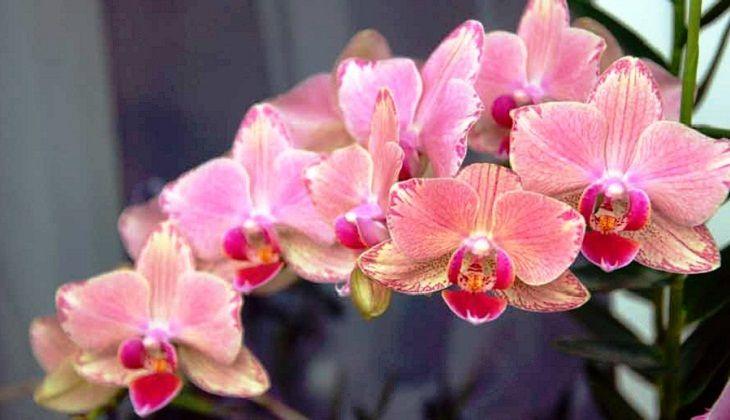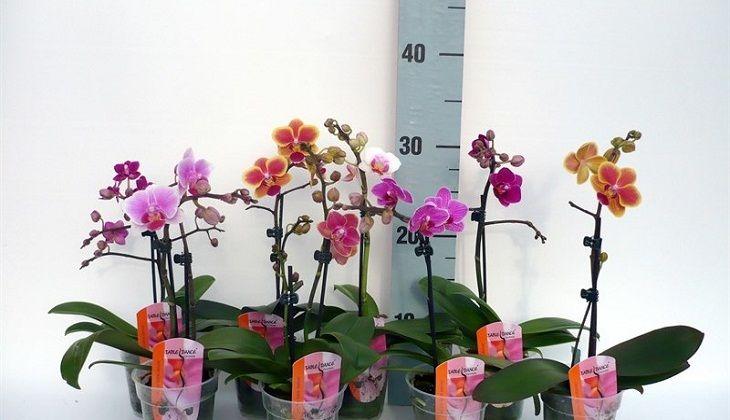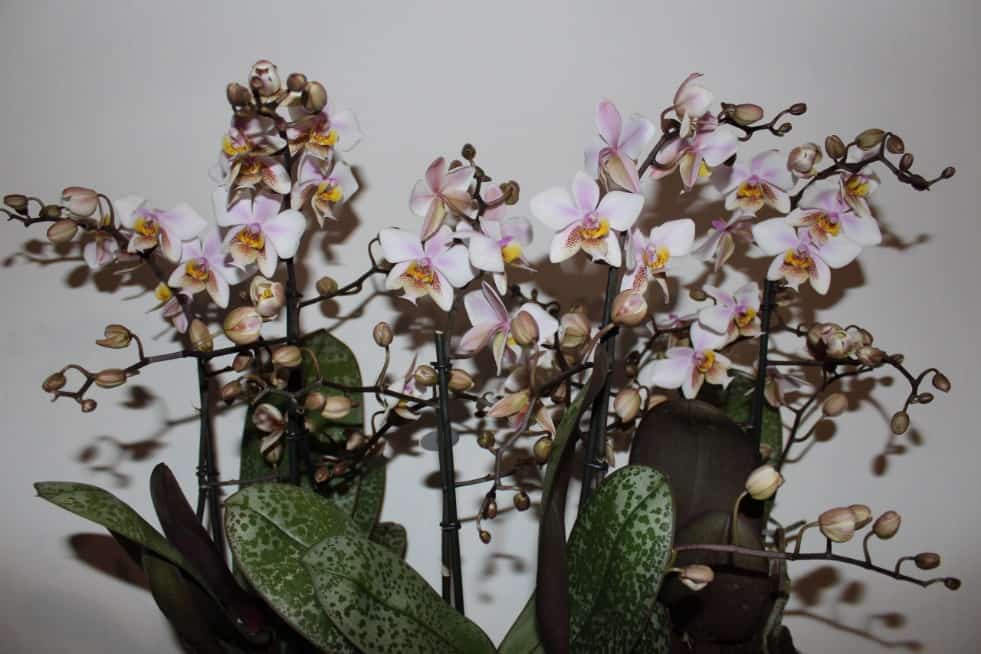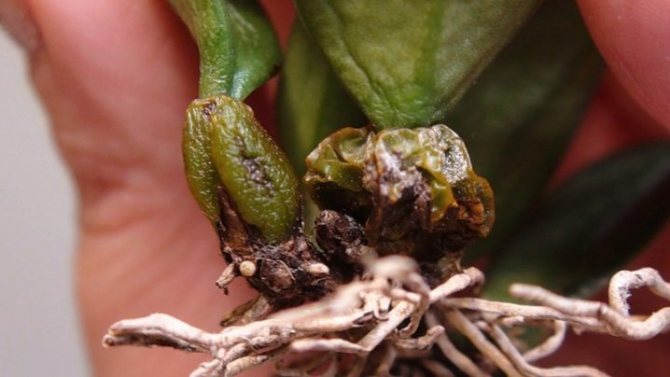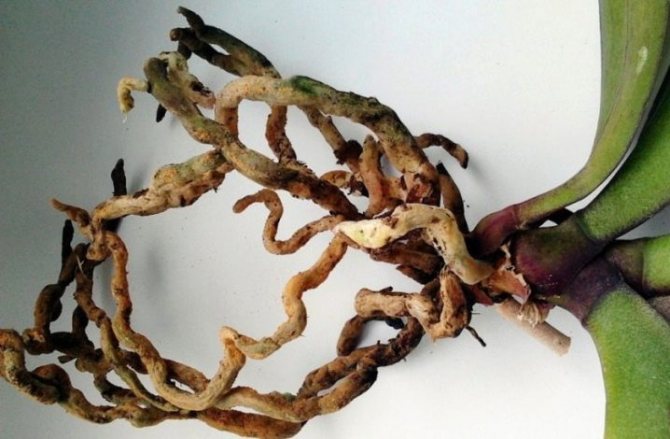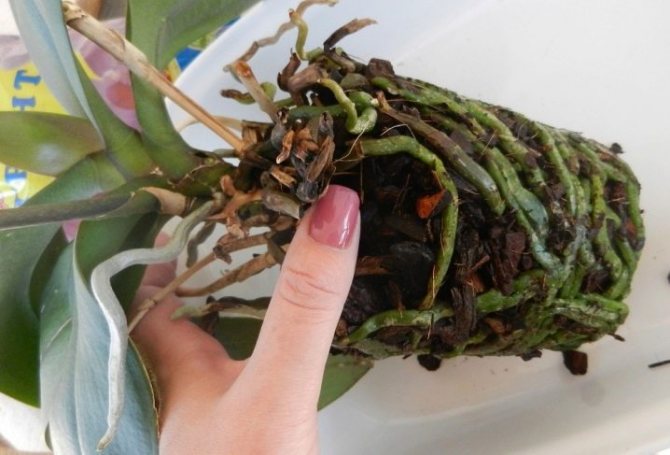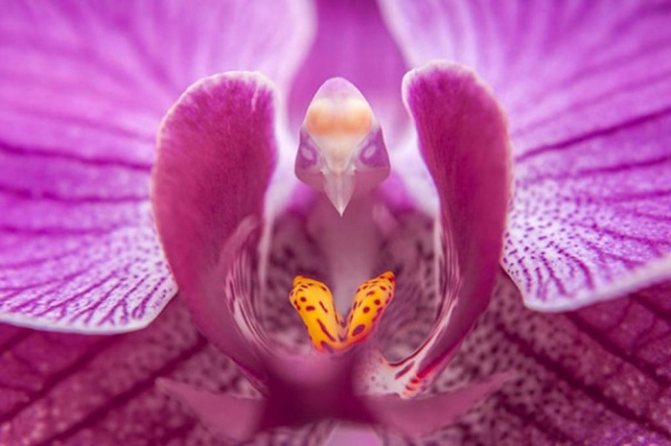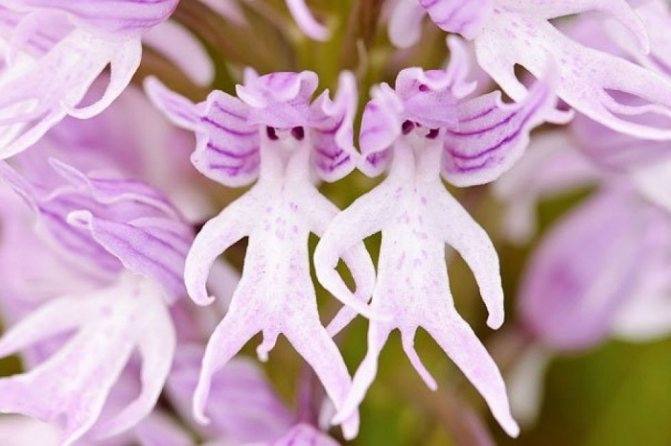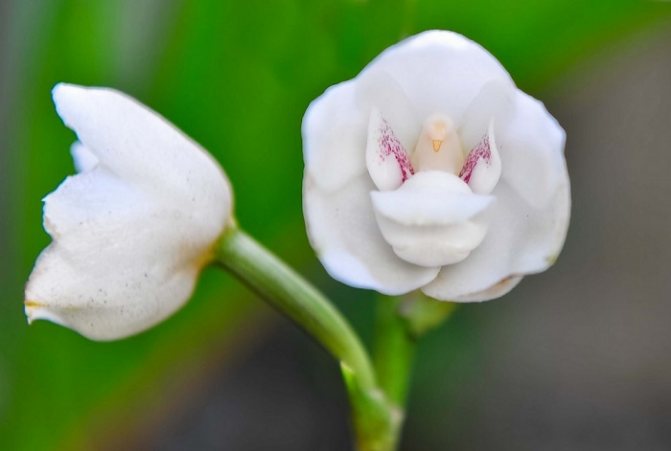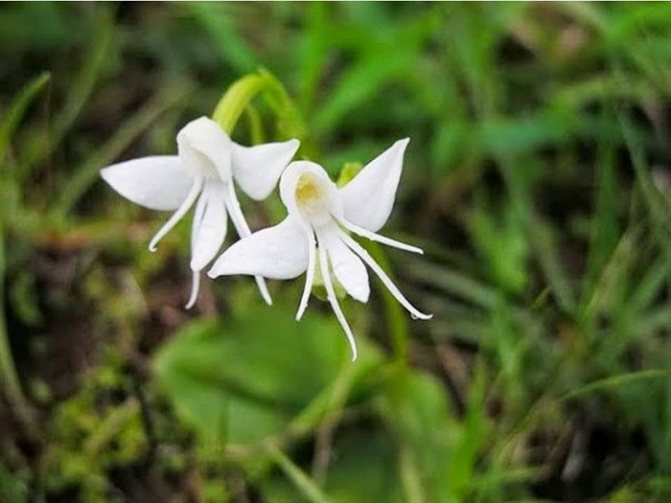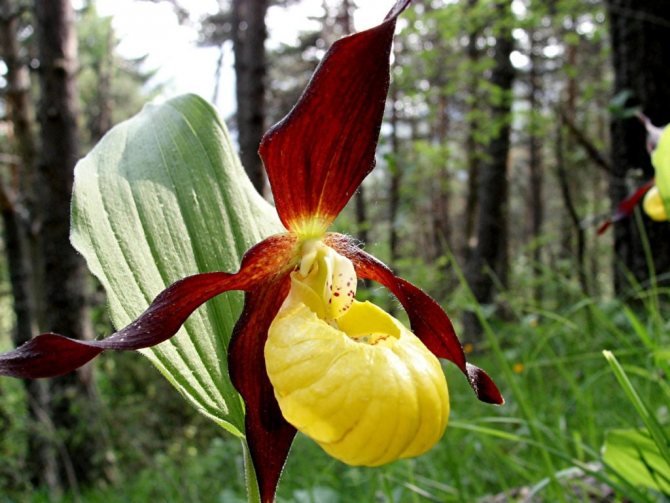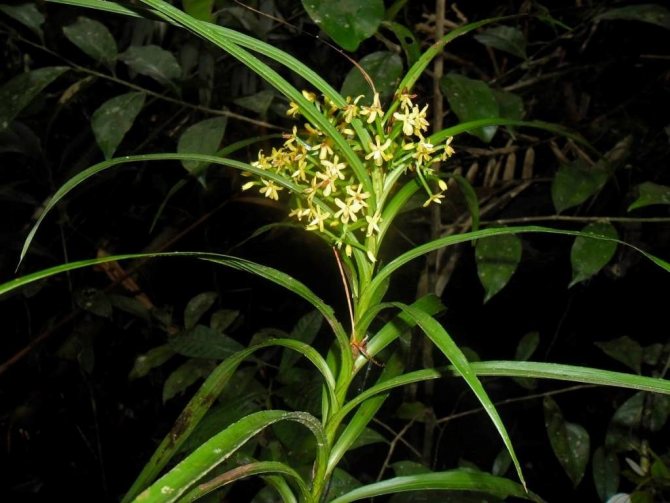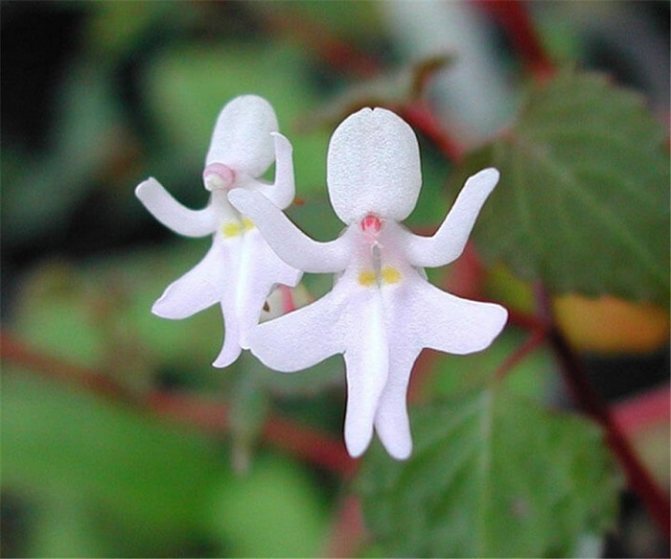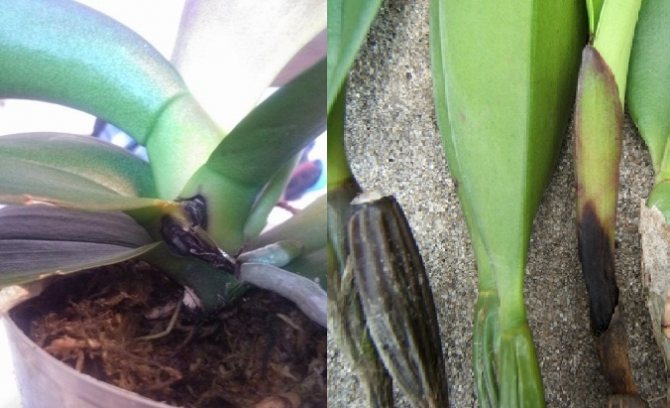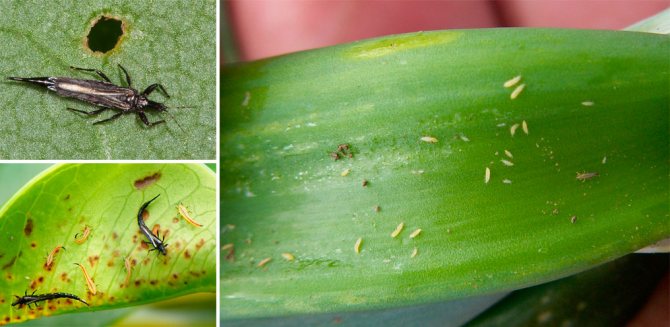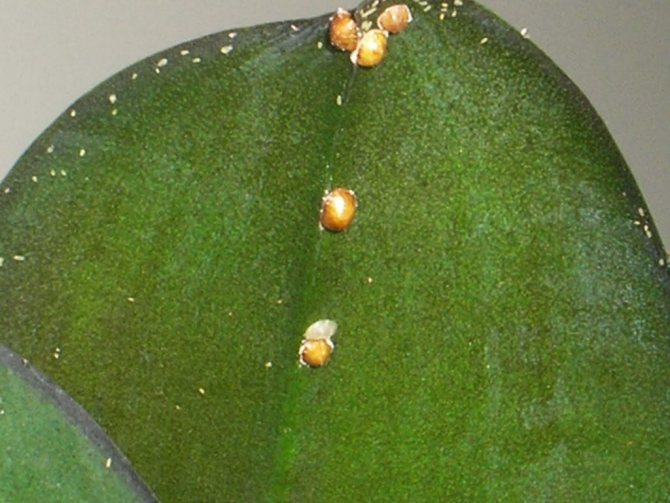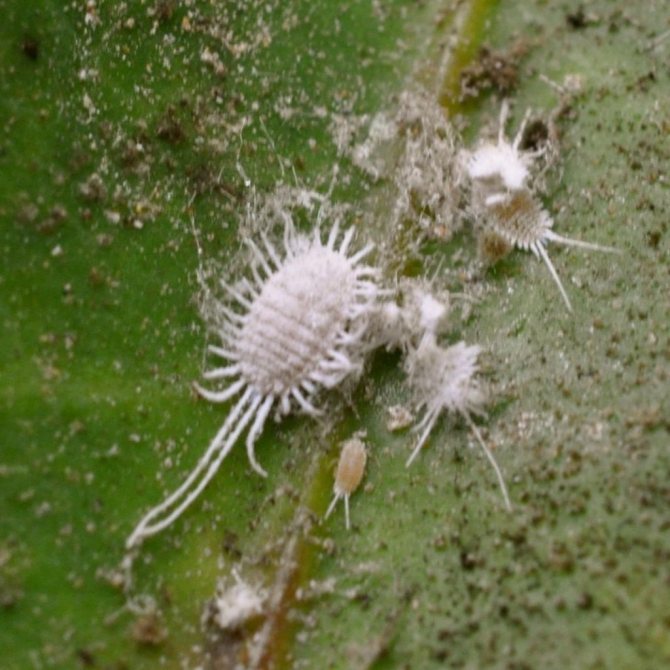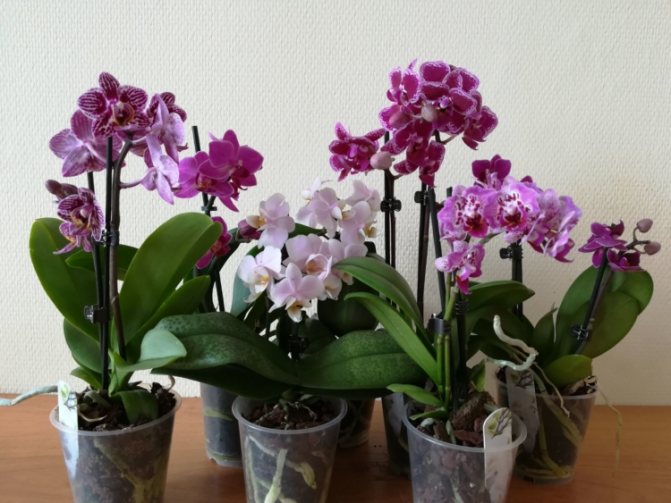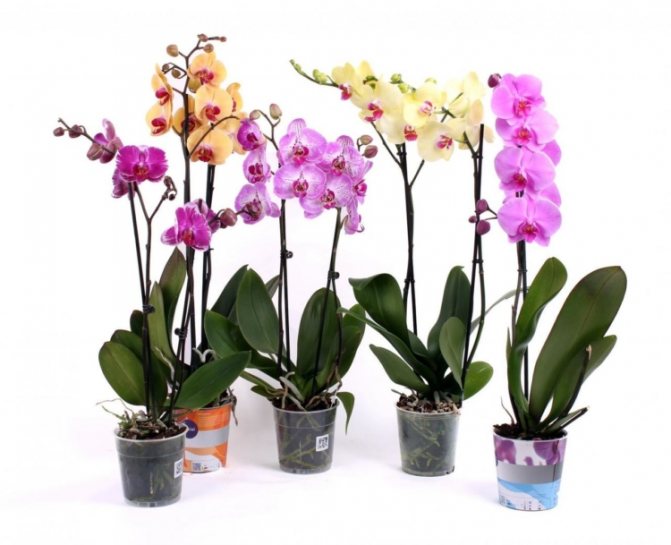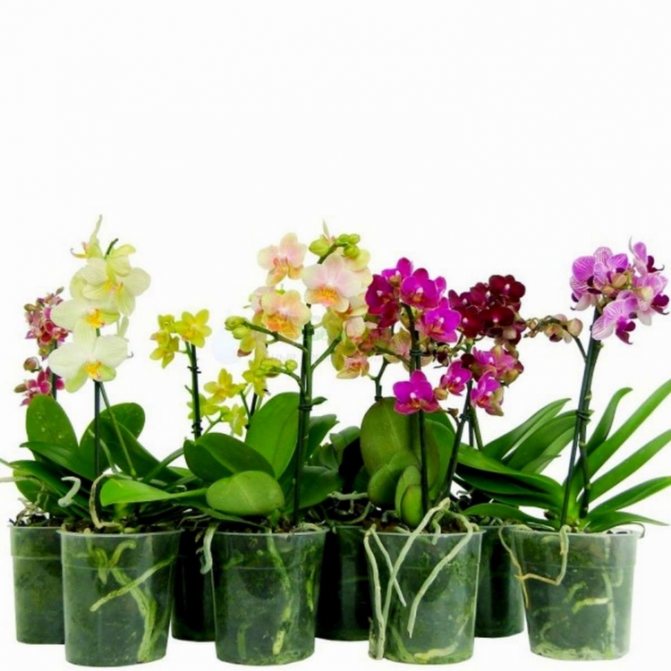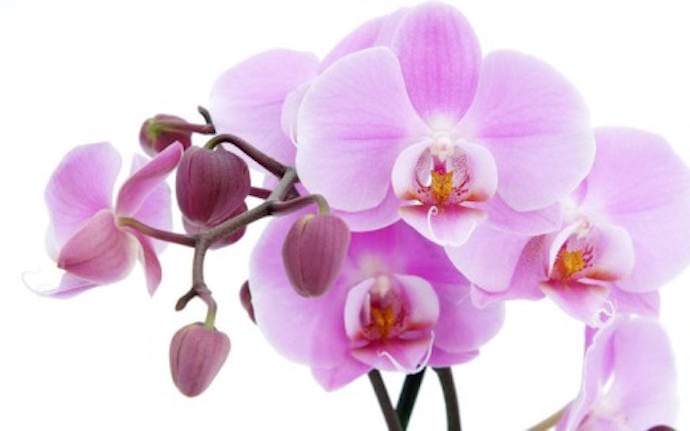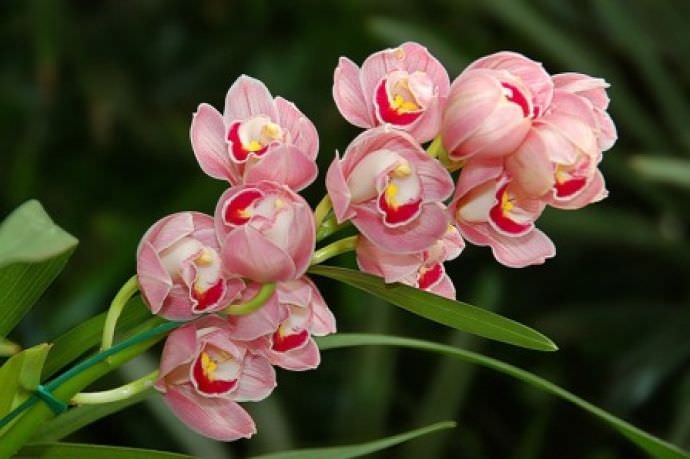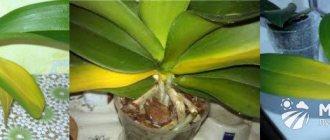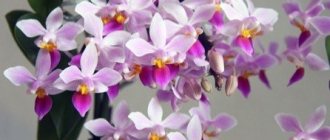
It is good if the purchase of a flower is planned, and the grower chooses himself where to buy and what to choose. But what if an exotic beauty fell like snow on your head, as a gift for your birthday or March 8? Whichever way the orchid gets into the house, home care after purchase is necessary correct, it depends on how the plant will survive the stressful period of adaptation in a new room for it.
In any case, an orchid bought in a store, ordered online or donated and has already arrived home, an orchid must be carefully considered.
Mysterious Orchid Care
Orchids are very beautiful during the flowering period. It is simply impossible to take your eyes off them. These flowers are very popular today. They are happily grown both at home and in offices. In most cases, the blooming orchid is sold.


If you take proper care of her, she will be able to delight her with flowers for several more weeks. When buying an orchid, you need to know everything about caring for it, otherwise the plant may die.
Close inspection: what to look for?
Leaves and flowers
An adult phalaenopsis orchid or another species, as a rule, has several well-developed leaf plates. The presence of a young leaf, which does not differ in length and color from the old ones, indicates the health of the flower and normal conditions of keeping in the same place. In addition, the leaves should have an excellent turgor: do not droop, but grow resiliently, do not look lethargic.
Visible damage or spots on the leaf plates are a reason to doubt in favor of choosing such a plant. It is necessary to inspect the axils of the leaves - pests usually hide there and the first signs of rot from water ingress during watering or spraying appear. There can also be surprises on the underside of the leaf plates - parasitic insects and their larvae are also located there.
In sympodial orchids - cattleya, cymbidium and others, the subject of examination is pseudobulbs; they should not have soft depressed areas and spots, with the exception of species with ribbed-wrinkled tuberidia. The number of pseudobulbs less than three gives little chance of survival of the acquired plant.
If you intend to buy a blooming orchid, you should choose with an inflorescence that has both blossoming flowers and unopened buds, necessarily dense, and not loose.


Roots and substrate
When examining a flower you like, you should pay special attention to the root system. If the pot of the purchased orchid is transparent, it will not be difficult to see the roots: they should not have brown spots and visible areas of rot. Healthy roots are grayish or silvery white, greenish or simply green-tipped.
If, at the slightest shake of the flower pot, the plant seems to dangle in it from side to side, then the root system is not in order. Healthy roots firmly hold the epiphyte in the substrate or the terrestrial orchid in the soil mixture. The presence of dead roots poorly characterizes the health of the purchased flower.
The condition of the substrate can also indirectly tell the grower about the health of the new pet.Mold or green bloom on the bark and on the inner walls of the pot clearly indicates that the orchid has been waterlogged, therefore, you can expect anything from such a plant - from fungal infections to woodlice.
Lighting
The plant will be able to continue its growth, will bloom for a long time, if you take care of the right lighting. The orchid loves diffused, bright light. If the plant is placed on a windowsill on the south side, it will only have enough lighting in summer.
In the rest of the year, she will suffer from insufficient light. You can replace natural light with special phyto lamps. Remember, an orchid needs at least ten or twelve hours of light every day.
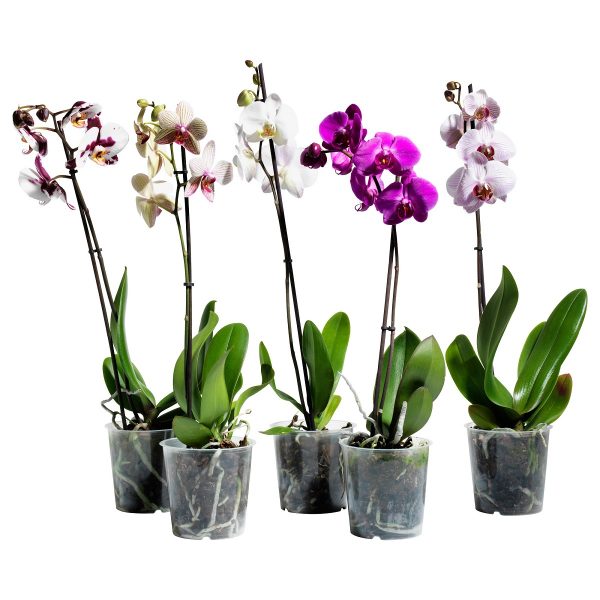

Processing rules
After finding any of the insect species, urgent treatment is required. Quarantine the plant.
A sick orchid should be treated, as well as all healthy plants in order to prevent in the following way:
- With a cotton pad moistened with water, remove, if possible, insects from the leaves and trunk of the plant. Transplant the orchid into fresh substrate, completely removing the old roots from the roots;
To prevent orchid decay after water treatment, Wanda should be hung upside down until it dries completely, and in Phalaenopsis, blot the growth point and leaf axils with several dry cotton pads. Leave dry cotton pads in your sinuses for 5 minutes.
- Dilute the preparation to be processed according to the instructions. Use only freshly prepared solution. Treat the plant, substrate evenly. Moisten the leaves from the outside, inside;


Laundry soap helps fight pests.
Some folk remedies help:
- Scare off pests;
- Slow down their reproduction.
You can use such means for prevention.
To make it easier to remove the scale insects from the plant, use rubbing alcohol... They moisten cotton wool or a cotton swab with it and wipe the accumulation of insects. Remember that some types of orchids are very sensitive to alcohol, so you need to treat a small area of the leaf first.and make sure there is no burn.
Helps against aphids, thrips, spider mites laundry soap solution... It's easy to cook. Dilute 30 grams of crushed soap in 1 liter of hot water, stir until completely dissolved. The plant is completely cooled and treated.
Infusion of tobacco helps against:
Take tobacco dust or tobacco leaves, pour hot water, the ratio of ingredients is 1:10. The solution is insisted for 24 hours.
After this time it is diluted with water 2 timesprocessing the plant. For better viscosity, you can add 40 grams of laundry soap.
Well recommended citrus peel infusion vs:
For cooking, take 100 grams of dry or fresh crusts, pour 1 liter of warm water. The solution is infused for 4 days, excluding exposure to sunlight. To enhance the effect, spread dry crusts on the surface of the substrate.
In addition to the husk, you can use onion pulp... To obtain a mixture, the onion together with the husk is grated or passed through a meat grinder. The resulting gruel is poured with 1 liter of hot water. Insist 2 days and filter. The resulting infusion is diluted with a liter of water and the plant is treated with it.
Watering the orchid correctly
Never use a watering can to water the orchid. To moisten it, place the pot with the plant in a container of water for 20-30 minutes. This procedure should be carried out when the roots begin to dry out. The orchid does not tolerate constantly wet soil.
Therefore, after watering, wait for all the water to drain through the drainage holes. For humidification, use only settled warm water. This should be done in the summer several times a week, and in the winter - once every two weeks.


Do I need a transplant after purchase?
Do I need to transplant an orchid in the first days after buying in a store? A healthy flowering plant with no visible damage to the leaves and root system - definitely not. If it was sold in a good bark substrate, in a pot corresponding to the size of the orchid, then there is no need for a transplant for a year or even two. An unsightly-looking vessel will save the pots - they just put a pot with an orchid in it.
However, many experienced orchid growers still prefer to transplant the plant after flowering and here's why: some suppliers plant the orchid on wet foam rubber during transportation, that is, they place it under the bottom of the flower between the roots. This surprise is not visible to the new owner of the plant, he waters the orchid after the substrate has dried, but the foam rubber does not have time to dry out. Constant moisture at the roots inevitably causes rotting, the plant dies, therefore, this source of moisture, timely removed during transplantation, will not cause deterioration of a healthy plant at the time of purchase.
However, there are several cases when an emergency transplant immediately after purchasing an orchid is inevitable.
- Damaged or rotten roots. During transplanting, all dead or rotted areas on the root system are removed, the cuts are sprinkled with crushed charcoal. The roots, if necessary, are treated with a fungicide solution. If there are a lot of rotten roots, it is better to sacrifice the peduncle in order to save the whole plant.
- The orchid arrived at the house, planted in moss - transplantation into the bark is required.
- The substrate in which the acquired flower grows is unsuitable: the bark is rotten and crumbles or is compacted to such an extent that it prevents normal air circulation around the roots.
- The plant "dangles" in the pot - a transplant is needed to find out the reason: the matter is in the substrate (its insufficient amount) or in the roots damaged by the disease.
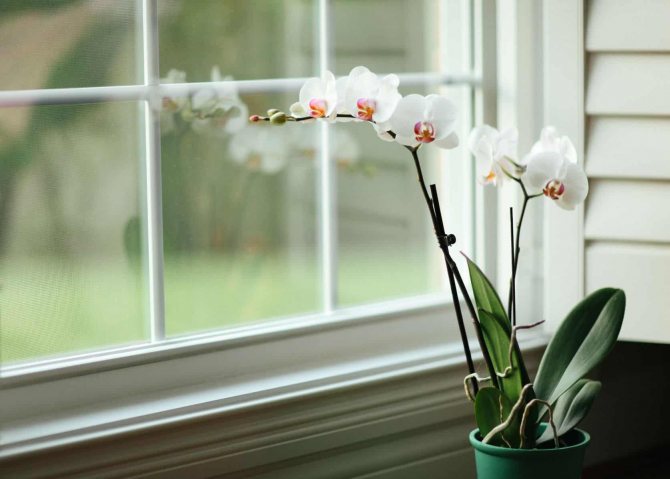

What should be the temperature?
No indoor plant will be able to withstand a sharp drop in temperature. The orchid is no exception. She can die if the temperature is less than +15. Intense heat can also lead to irreparable consequences. Eighteen to twenty-four degrees Celsius is the most comfortable temperature for an orchid.
Air humidity should not exceed 80 percent and should not fall below 60 percent. The plant likes to be sprayed as often as possible. This can be done up to five times throughout the day. The cold season and flowering period are exceptions. At this time, you do not need to moisturize the plant too much.
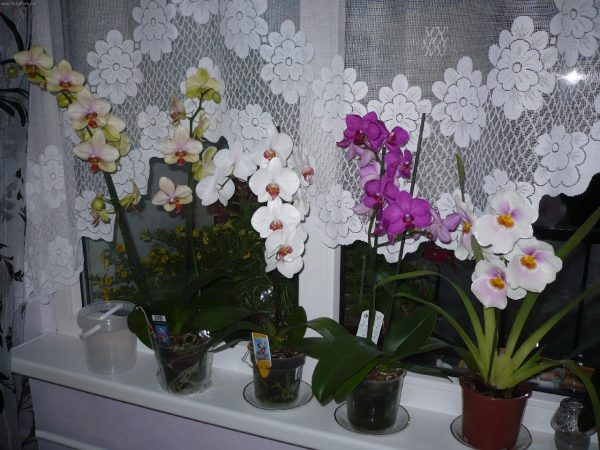

Types of orchid pests and how they are dangerous
Insect pests will appear on orchids can in various ways... They can enter the plant through an open window. A pet can bring in wool from a walk.
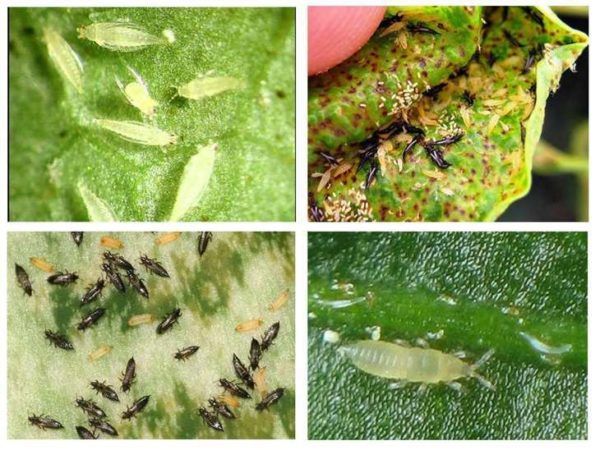

There are many orchid pests.
Even a thorough inspection in the store cannot protect against the acquisition of a pest-infested orchid. The easiest way is find insects on the leaves and the trunk of the plant, but there are pests that live in the substrate and on the roots.
They are feed on plant parts, sucking its juice and not allowing it to develop. Gradually, pests multiply and fill the entire plant, because of which it dies. Another danger lies in viral diseases that some types of insects carry.
Orchid feeding
Do not rush to buy an orchid and immediately feed it. Wait a few weeks. The plant needs to adapt to its new location. When two or three weeks have passed, you can apply fertilizer.
This can be done during the flowering period every two weeks. When the flowering period is over, you need to fertilize once a month, not more often. If you often transplant the plant, then you do not need to additionally feed it. Additional feeding is needed only during the flowering period.
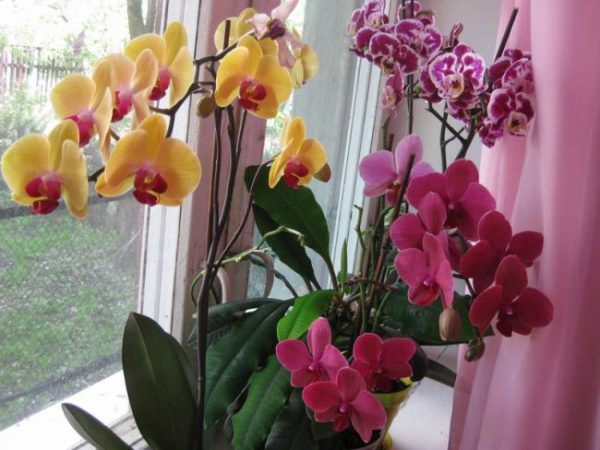

Adaptation
As strange as it sounds, this flower needs quarantine for 1.5-2 weeks after you brought it home from the store. To do this, it is necessary to put the flower separately from the rest of the plants so that direct sunlight does not fall on it. Watering and fertilizing during this period is also not worth it. When the quarantine is over, accustom the flower to the sun and watering, but gradually. ...


Transfer
Many orchid owners, when they come home, try to transplant the flower right away and this is one of the mistakes. If in the store, the orchid grew in the substrate, then you can forget about the transplant for at least a year. It's another matter if the flower grew in sphagnum moss. In this case, a transplant is necessary. It is also not worth sprinkling a flower from pests and other insects, especially if you do not see them. At least during quarantine.
We hope we have answered the question of how to care for your home orchid after purchase. Now let's talk about care and maintenance, after adaptation.
Possible problems
Sometimes problems arise during transplantation and then they need to be quickly resolved so as not to destroy the plant.
Rotten roots - what to do?
All rotten roots are pruned pruning shears or sharp scissors. After that, all slices are processed:
- Activated or charcoal;
- Cinnamon;
- Zelenka.
Then the plant dried and planted in the substrate.
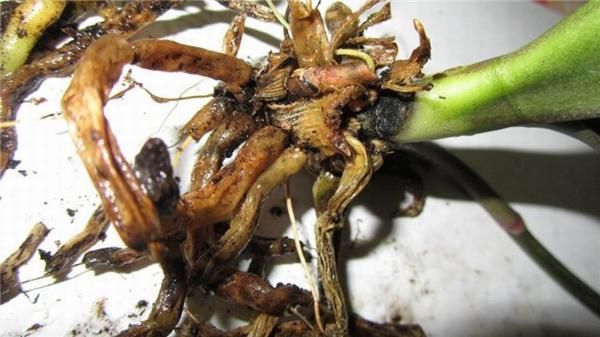

Flowers fall
This is due to the dry content or the flowering period has simply ended. Watering is usually carried out, and if this does not help, then after all the flowers fall off cut the peduncle only where it has dried, and are waiting for the subsequent flowering.
Leaves wither
Most likely root problems due to unregulated watering... The flower is removed and the root system is examined for the quantity and quality of the roots. If there are damaged roots, they are removed and the sections are processed.
Possible mistakes
Common mistakes when transplanting Phalaenopsis:
- Wrong choice of soil.
- The pot does not provide aeration and illumination of the roots.
- The size of the pot is incorrect.
- Transfer to a new pot without inspection of the root ball.
- Cauterization of roots with brilliant green, iodine and other substances.
- Watering by soaking immediately after transplanting or over-watering an unrooted plant.
So, Phalaenopsis orchid needs a planned transplant every 2-3 years or for "medical" reasons. Don't be afraid to replant your plant. After a while, you will understand his needs and requirements, gain valuable experience, and your pet orchid will delight you for many years.
If you gave an orchid in a pot, then how to care for it?
Most often, tropical beauties appear with us on sale in winter in a luxurious blooming form. First of all, having received it as a gift, you need to quarantine her away from other flowers.
This will help identify pests, if any, and monitor the health of the flower. For a healthy plant proper care must be organizedso that it has a long life and blooms that delight the grower.
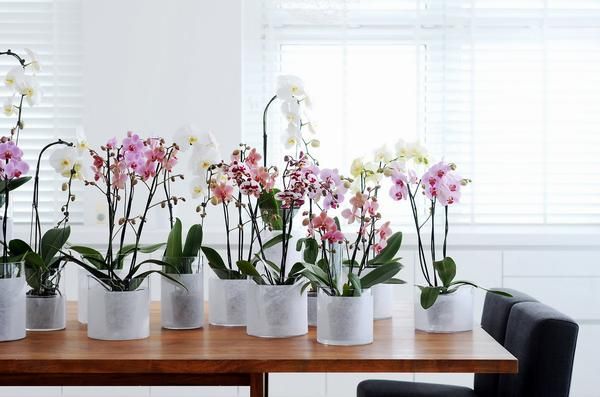

How often to replant?


Florists agree that Phalaenopsis needs to be transplanted at least every 2-3 years. During this time, the following happens:
- Substrate partially decomposes, loses air permeability, becomes overgrown with moss and is saturated with salts.
- The central part of the root system dies off from waterlogging, poor aeration, excess salts. Roots twine around the walls of the pot, sprout from the drainage holes.
- The stem grows from above, is exposed, often hangs sideways from the pot - this is a biological feature of growth. The green mass outweighs, the pot may tip over.
- Young roots growing from the stem suffer from drying out, especially in winter.
All these signs mean that the moment of transplantation has come. Prepare an orchid pot. Phalaenopsis is buried in it to the level of the lower leaves.The part of the stem that has died from below can be broken off.
About orchids from the store
Every representative of the fair sex of any age cannot indifferently walk past orchids in a flower shop. Flowers have become so popular that they can already be found in absolutely any retail outlet. We often see that there are shares on them. But still the price is quite decent.
I, like everyone else, walked, was thrilled, but it was a pity to spend money. And for some reason I thought that these beautiful flowers would stand on my window all year round and bloom. And once I ordered myself orchids as a gift. It turned out that in a couple of months I was presented with as many as four such flowers. Fortunately, there was no limit, but it turned out to be very fleeting.
In just 1-2 weeks, the flowers faded, some of the buds fell off without even blooming. After that, some flowers began to wither leaves. My fight began. I can say that by trial and error, out of four in three years there is only one orchid left. Why it happened, what was my mistake, what nuances you should know what to do with orchids when you just bought it, I will tell you further.
Some more information about flowers from shops
Friends, we all understand that more often than not, promotions are not done just like that. And of course, flowers that cost more than a thousand will not dramatically cost 3-4 times cheaper. They are already fading or getting sick.
If you have already filled your hand, then buy yourself orchids for a promotion, you can transplant yourself, you know all the rules. Many people do this - they do not buy flowers during flowering, but when there is already one greenery. These orchids can be bought very cheaply. And bring the plant to mind and flowering yourself.
Also, I have already shared information that once I heard how sellers, placing such flowers among themselves, whispered, they say, all these plants are disposable and they will never buy them for themselves. And we go and rejoice at the discount.
It is also worth noting that trade in our time has changed a lot, now, wherever you look, sellers are ready to do everything to sell goods at a higher price. It's the same with flowers. Plants are fed with top dressing, stimulate flowering, and then they die with the usual care.
So, I told you my experience, now I will tell you about the soil and about the transplant with a cut of roots.
What to do with an orchid flower stalk after flowering
When your orchid has faded, it's time to work with the flower stalk. It is worth noting that you do not always need to rush to cut the peduncle. Since more flowers may appear on it, it is necessary to cut the peduncle when it is completely dry. Most often, peduncle pruning occurs in October-November.
The orchid may not be easy to care for, but its bloom is well worth the effort. And if you are ever given such a flower or you yourself decide to buy it, our article will help you.
Description of the variety
Mix orchids are perennial (6-9 years) evergreens that came to our region from the humid tropics of Japan. The main characteristics of the species:
- straight shoot in a single copy and the apical point of germination;
- long, wide green leaves with round ends, growing in 2 rows;
- short stem;
- 2-3 flowering branches on each plant.
Color, shape and size vary, depending on the variety: there are green, white, pink, yellow specimens with multi-colored blotches, round or oval. Their size is from 2 to 15 cm.The height of Phalaenopsis Mix reaches from 30 cm to 1 m.
Features of the composition of the soil
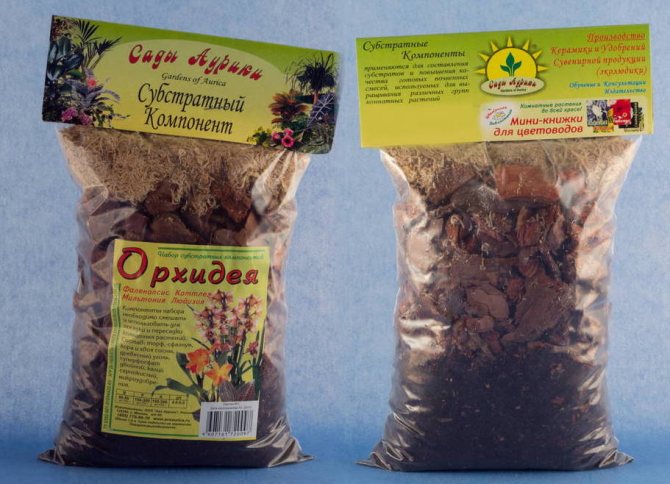

Ready soil
Such a plant must grow in special soil, which includes sphagnum moss and tree bark. There are bags of ready-made soil in specialized stores, but you can mix it yourself. To do this, grind the cork two centimeters and use pine bark. Mix the ingredients and boil for half an hour, then pour out the old water and continue boiling for another half hour.Then dry and cut so that you get elements of three centimeters in size. Boiling, in turn, will help get rid of harmful bacteria on the surface of the bark.
When to transplant at home?
The Aalenopsis orchid does not have a distinct dormancy period. Leaves and roots are formed year-round, with short breaks. Flowering also lasts several months. The best moments for an Aalenopsis transplant:
- Spring - the time of awakening and active growth. For indoor plants, spring begins in February and ends with the onset of heat on the windowsill.
- The best time to transplant may be after the central heating is turned off. Plants take a break from the hot dry air and begin to grow vigorously.
- Rest after flowering. It is highly undesirable to transplant flowering Phalaenopsis. It is better to wait until the flowers fall off and the peduncle can be cut off.
Chemical insecticides
How to treat an orchid with chemicals? Chemistry based drugs worth using:
- When biological agents have failed;
- Or the plant has a strong pest infestation.
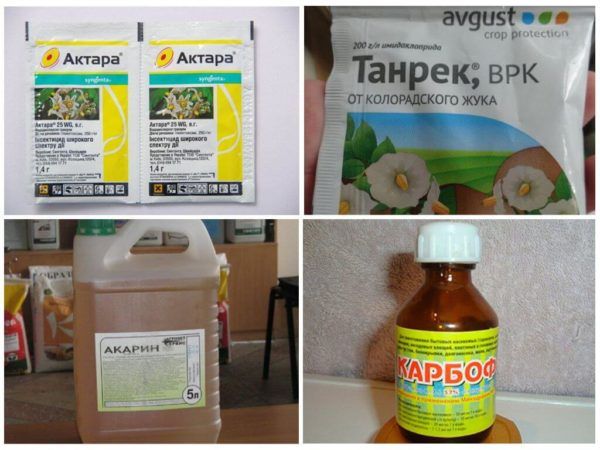

When neglected, orchids use chemicals.
For processing it is worth choosing a tool with the lowest hazard class (3 or 4) new generation. It should be used strictly following the instructions and safety measures. All funds are:
- Absolutely safe for plants;
- Acting exclusively on pests.
The composition of insecticides is based on chemicals that are absorbed by the plant and transmitted to pests during feeding... Insects die on the first day. Re-processing should be carried out after 2 weeks until the complete disappearance of the pests. To avoid addiction, it is recommended to alternate between different drugs.
To such drugs
relate:
The convenience of such drugs lies in their fast response with high efficiency... The solution is easily absorbed by the plant through the roots, leaves, without interfering with its proper development and growth.
History of origin: what is this species?
Orchids have a history of 130 million. Species Mix is a fairly young representative of this family.... Phalaenopsis Mix is a native of the Asian tropics, which was adapted by breeders over 100 years ago for indoor cultivation.
The second name - phalaenopsis - is translated from Greek as "like a moth". It appeared thanks to the director of the European botanical garden, Karl Blume. It was he who brought the original flower to his greenhouse in the 19th century, the ancestor of the Mix species, captivated by its similarity to a butterfly.
How to propagate such a plant?
Many people want to propagate a flower - a butterfly. At home, it reproduces superbly with the help of:
- Root rosettesthat grow on the plant. They are planted each in a separate pot in the orchid soil.
- Air kids - are formed on peduncles. They are transplanted into the ground, when each has its own roots.
- By dividing the stem, obtaining material for propagation by cutting off the top. The resulting cutting is placed in an orchid substrate and covered with a transparent cap. This method is also used for plant rejuvenation.
Biological preparations
So how to treat an orchid against insects? To combat most pests, you can use biological insecticides.


Biologicals can be used in pest control.
The main advantage is their safety, since the components in the composition are of natural origin. They are:
- Not hazardous to humans or animals;
- Do not accumulate in plants;
- Do not addictive pests to the components.
It is better to use them when infesting an orchid is at an early stage... For more complex cases, these drugs may not cope. For the complete disappearance of insects, it is better to carry out repeated treatments.
The basis of such drugs make up:
- Mushrooms;
- Bacteria;
- And entomopagenic nematodes.
Treatment with drugs should spend only in the evening... The ambient temperature should be the one indicated in the instructions for the preparation.
They have a pronounced neurotoxic effect mushroom-based insecticides... After the drug penetrates into the blood of an insect, it causes paralysis, and then its death. On sale you can find:
The most convenient drugs to use serve on the basis of bacteria... They are available in powder form. While mushroom-based drugs can cause allergic reactions in humans, allergy to bacteria-based drugs is rare. The most common are:
The most effective today is the drug Nembact based on entomopagenic nematodes. They penetrate into the pest's body and stop its developmental phases. The complete death of pests occurs after a maximum of 3 days.
A step-by-step transplant guide for a beginner
The only conditions for proper planting are sterility and neatness. First, let's prepare everything you need. We will need:
- Pot.
- Priming.
- Sharp scissors or a utility knife.
- Alcohol for sterilizing instruments.
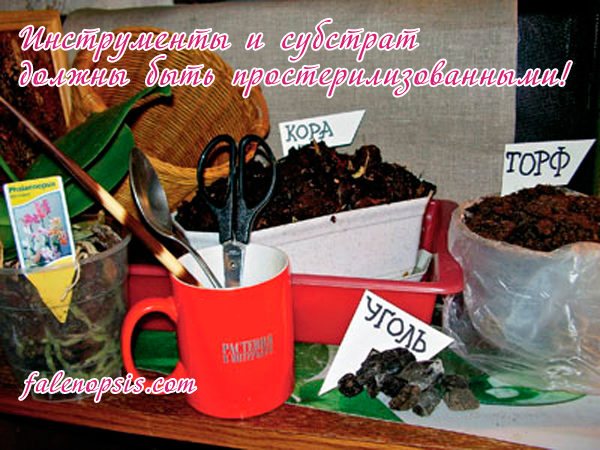

Pot and soil selection
When wondering how to transplant phalaenopsis into a larger pot, many of the users would like to understand how to choose a container for planting. If you are replanting a plant for the first time, immediately after the store, the pot must be changed without fail.
The fact is that the transport pots all have a small protrusion, which prevents a large amount of moisture from entering the pot from below. The disadvantage of such a capacity is the possibility of trauma to the roots and their insufficient moisture.
Quite often during the year, the root system grows and you have to transplant a flower from one pot to another, larger in size. It is necessary to choose a container that is 0.5-1 cm larger in diameter than the previous one, this will reduce the stress level for the plant and increase the chances of rapid flowering.
As for the substrate, here it is necessary to make a decision on the situation - to change the old soil to a new one or to leave it. In case of low moisture resistance, it is recommended to replace it completely, however, for a number of plant health problems, the old and new soil should be mixed 50/50.
Advice! To avoid infection with parasites, the bark can be held for 5-10 minutes in an oven heated to 200 degrees.
You can prepare the substrate yourself. To do this, it is necessary to collect the bark from the non-living parts of the pine and cut them into medium-fraction pieces. But the easiest way is to buy the substrate in specialized stores. Orchids thrive in the following types of bark:
- Durpeta is a fortified substrate containing bark, charcoal, agroperlite and peat moss.
- Compo Sana is a soil containing pine bark and peat.
- Orchid is a Ukrainian-made substrate based on steamed pine bark, sphagnum and vitamin supplements.
Root system inspection
Before planting phalaenopsis, you need to check the root system of the plant. With a sterile instrument, remove dry, wrinkled roots, as well as threads without velamen. All roots should be firm, free from blackness and soft, damp spots.
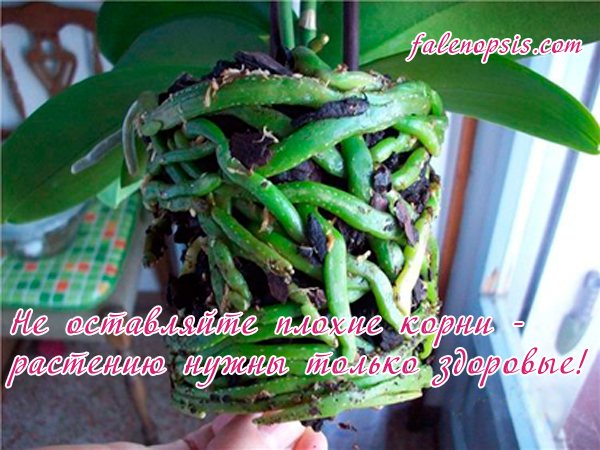

Too long aerial roots can be placed in a pot if possible, but it is important not to deeply deepen the neck of the plant. The drier the area is, the better.
Important! The soil and the pot must be disinfected before use: the soil is in the oven, the pot should be washed well with warm water and soap.
Transplant plan
After preparing everything necessary, the scheme of actions should be as follows:
- With gentle movements, we take the plant by the trunk with one hand, with the other by the pot and lightly scroll. In the case of a tight planting, the pot can be cut and the flower can be removed from there.
- We easily shake off all the old soil into a separate bag, check if there is a cup of peat or foam rubber under the neck, if there is, we remove it.
- We put the plant in a new pot and add a completely new substrate there or mixed in equal proportions old and new, if this is the first transplant.
- After transplanting, you need to make sure that the plant is firmly seated, does not stagger or tilt in different directions.
Choosing a pot for growing orchids
When choosing a pot for growing an orchid, keep in mind that the roots need air, not necessarily light (i.e. a transparent pot). Many people think that a transparent pot is necessary for orchids, but this is not so, a transparent pot is just convenient for you to care for. For example, through a transparent pot you can see the state of the root system. It is better for beginners to grow in polypropylene pots. Any orchid pot should have holes so that water does not stagnate, otherwise the roots will begin to rot. A transplant into a larger pot is done when the roots of the orchid begin to stick out from the holes of the pot, such a need arises after a couple of years.



